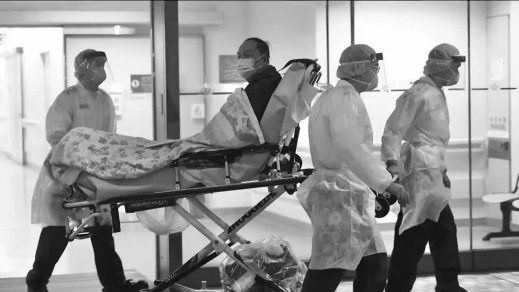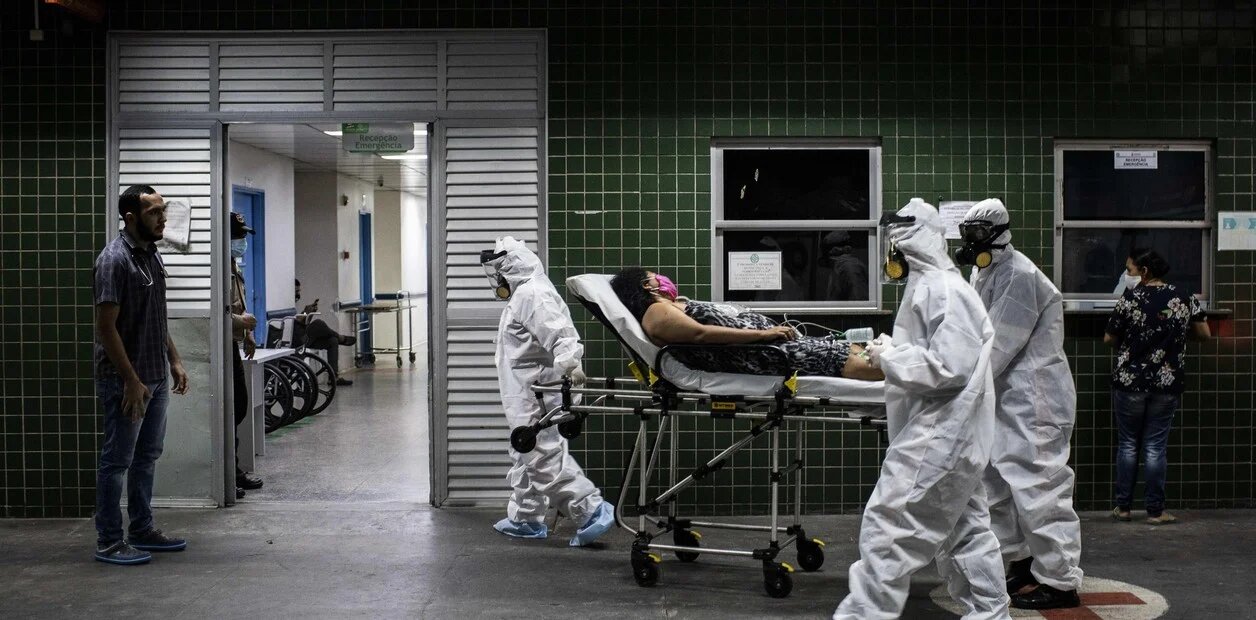Since April 3, the Chinese city of Wuhan, where the first case of the SARS-CoV-2 coronavirus was recorded, has not detected new infections. This led to the health authorities starting to reduce restrictions on April 8 and begin the phase of reopening schools, the restart of public transport and the return to operation of companies.
However, since last weekend, the local health system detected six new cases, which has led to panic in the capital of Huabei province at the possibility of a new wave of coronavirus transmission in the Asian giant.
The first case reported in Wuhan in more than a month corresponds to an 89-year-old man, who infected his wife, and may have infected five other people living in the same residential complex.
The rest of the cases had previously been classified as asymptomatic, which means that they had tested positive but showed no clinical signs such as cough or fever.
Those people can transmit the virus even if they are not sick, but China does not count asymptomatic cases in its official register of confirmed infections until they show symptoms, BBC World reported.
In fact, hundreds of asymptomatic cases are currently being monitored by health authorities in Wuhan to identify if they suffer from COVID-19.

11 million tests in Wuhan
To prevent the coronavirus from spreading again among the population, the Chinese government ordered screening tests for the more than 11 million inhabitants of Wuhan.
Authorities have asked all city districts to come up with a plan of how they will conduct the tests in all of the inhabitants of their respective territory in the next 10 days.
The tests will have to be prioritized to vulnerable groups and residential areas, according to the statement sent by the Wuhan antiviral department reviewed by El Confidencial.
Although the city has cautiously returned to normal life following the lifting of restrictions imposed in April, this ambitious plan to evaluate the millions of citizens in a matter of days shows the visible fear of a possible resurgence of the virus.
The technological difficulties involved in this task are enormous. In two months, the United States has applied a little more than nine million tests, Russia does not reach six million, Germany has reached about three million, while Spain stands at 1.6 million.

However, Wuhan intends to exceed these figures in just 10 days. To do this, they will use all the types of tests available, the laboratories will work at an unusual rate, they will track the virus through their mobile applications and monitor the symptoms remotely. The objective is to avoid going back in time at all costs and repeat a scenario to which no one wants to return.
Peng Zhiyong, director of the intensive care unit at Wuhan University Zhongnan Hospital, was optimistic, explaining that the teams have already tested three to five million residents, so Wuhan should be able to «assess the six to eight million remaining in 10 days”, said La Razón.

Quarantine in Shulan
Despite the fact that the peak of the epidemic in China was left behind and the authorities have managed to keep the new diagnosed cases below double digits, and relax the restrictions imposed on the population, the registry of infections in the northwest of the country has increased precautions and restrictions in the city of Shulan, located in Jilin province.
In this border region with Russia and North Korea, at least 30 new cases have been reported in the past week, reported the National Health Commission.
«This has alerted the authorities to the possibility of a second wave of cases in the country», the Reuters agency said.
Given this situation, Shulan was elevated to a high risk level and is the only city in China with that classification
The government declared martial law, quarantined and ordered the temporary closure of all public establishments, according to the Global Times newspaper.
All residents were ordered to stay home, and only one member of each household can go out each day to buy essential items.
In addition, public transportation has been suspended and taxis are not allowed to leave the city.
However, in the rest of the territory the situation is not the same. According to the National Health Commission, the total number of deaths from COVID-19 remains at 4,633, among the 82,926 infected patients officially diagnosed since the start of the pandemic, and of whom 78,189 successfully overcome the disease and were discharged.

Danger of new outbreaks in the world
Several outbreaks of coronavirus have appeared around the world, as each nation tries to combine the reopening of their economies with the fight to prevent a second wave of infections.
In Lebanon, authorities reinstated a four-day national quarantine starting Wednesday night due to a sudden increase in reported infections and complaints from officials that people were not abiding by the rules of social distancing.
Meanwhile, Italy partially lifted the restrictions last week and saw a large increase in confirmed coronavirus cases in its worst affected region. There, the central government had to yield to the regions and accept that they resume certain activities that they planned to reactivate in June.
Pakistan reported 2,000 new infections in a single day, after the government eased quarantine and people overflowed markets and other public places.
In Latin America, Chile decreed a total quarantine in the Greater Santiago region starting next Friday, after registering a daily record of 2,660 new infections.
In the United States, which with almost 1.4 million cases and more than 83,000 deaths is the country hardest hit by the pandemic. The highest authority on infectious diseases warned that many states and cities could experience more deaths from COVID-19 and greater economic harm if they relieve restrictions in a very hasty way.
«There is a real risk of an outbreak that may not be controlled», said Dr. Anthony Fauci, director of the National Institute of Allergy and Infectious Diseases in the United States, who testified before a Senate Committee.
For its part, the World Health Organization (WHO) warned that the new coronavirus can become an endemic virus and, therefore, «never go away», while revealing that life expectancy could fall due to the pandemic.
«This virus may never go away», said Dr. Michael Ryan, a senior WHO official, in a news conference.
«Without a vaccine, it could take years for the world population to accumulate sufficient levels of immunity, I think it is important to consider this (…) This virus could become another endemic virus in our communities», Ryan said, after recalling that other diseases such as HIV have not disappeared although effective treatments have been developed.




